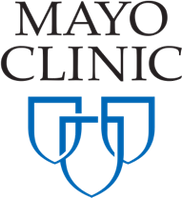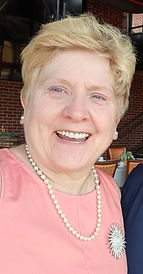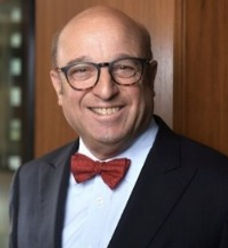
What is Dent Disease?
Dent disease is a rare genetic kidney disorder that affects males almost exclusively. Symptoms usually appear during childhood, but some individuals may be undiagnosed well into adulthood.
Who is Affected by Dent Disease?
In most cases, male children inherit the disorder from a carrier mother who has extremely mild symptoms of the disease, if any at all. When a mother is a known carrier of the CLCN5 or the OCRL1 mutation, there is a 50 percent chance of passing that mutation on to her children of either gender. Males who inherited a mutation will have the disorder and pass it to their daughters, but not their sons; females who inherited the mutation will be carriers and could pass it on to either their sons or daughters.
Types of Dent Disease
Dent disease type 1 is caused by changes (mutations) in the CLCN5 gene.
Dent disease type 2 is caused by mutations in the OCRL1 gene. Individuals may have additional symptoms with Dent type 2, including mild intellectual disability, eye involvement or diminished muscle tone (hypotonia).
De novo mutations may be inherited or occur randomly with no previous family history of the disorder (spontaneously).
Some individuals who meet strict clinical criteria for Dent do not have mutations in either the CLCN5 or OCRL1 genes, suggesting that additional subtypes of Dent disease may exist.
Symptoms
-Low-molecular-weight proteinuria and Hypercalciuria
When protein is found in urine it is called proteinuria. Low-molecular-weight proteinuria is THE characteristic finding in Dent disease (100% of all patients) and is not always detected in routine medical testing. Dent patients also have elevated levels of calcium in their urine which is called hypercalciuria. Low-molecular-weight proteinuria and hypercalciuria may be the only symptoms that develop in some individuals.
-Kidney calcifications (nephrocalcinosis) or kidney stones (nephrolithiasis)
Many, but not all individuals develop kidney stones.
-Progressive decline in kidney function
Renal failure usually does not occur until 30-50+ years of age and may not occur at all in some individuals.
-Other symptoms
Some individuals with Dent disease may also develop a bone disease, such as softening of the bones (osteomalacia) and hypophosphatemic rickets.
Some individuals with Dent disease may develop a vitamin A deficiency, which can lead to impaired night vision and dry eyes (xerophthalmia).
Some individuals with Dent disease Type 2 may develop additional symptoms, including mild intellectual disability, hypotonia (decrease muscle tone), and clouding of the lenses of the eyes (cataracts).
Diagnosis
A diagnosis may be suspected in individuals who present with three of the following:
-
high levels of low-molecular-weight proteins in the urine
-
excess levels of calcium in the urine
-
and one of the following: kidney calcifications, kidney stones, blood in the urine, low phosphates, chronic kidney disease, or evidence of X-linked recessive inheritance.
Testing options
Molecular genetic testing is generally recommended, since it is becoming increasingly recognized that other genetic causes of nephrocalcinosis and chronic kidney disease share clinical features with Dent disease.
Clinical tests that can be done, while awaiting genetic testing include:
-
Low molecular-weight (LMW) proteinuria at least five times above the upper limit of normal (100% finding in Dent disease).
-
No known cases of Dent disease have been missed using this screening.
-
-
Elevated urinary excretion of Beta 2 microglobulin or retinol binding protein.
-
Urinalysis assessing for protein and blood.
Current treatment
There are no standardized treatment protocols or guidelines for affected individuals. Due to the rarity of this disease, no treatment trials have been tested on a large group of patients.
Dent disease treatment is directed toward the specific symptoms that are apparent in each individual. In order to preserve kidney function, lifestyle changes can/should include:
-
a low-salt diet
-
maintaining hydration
-
taking prescribed medication to help prevent kidney stones
-
avoiding medications that can harm the kidneys, such as NSAIDS (Non Steroidal Anti-Inflammatories—like Advil, Aleve, Ibuprofen, Naproxen, etc.) and certain antibiotics.
-
Be cautious of contrast dyes in diagnostic tests such as CT scans, MRI’s, and angiograms.
-
Always let your doctors know that you or your loved one has Dent disease so they can be sure that the medication or test being prescribed does not have an associated toxic effect on your kidneys. (Consider carrying our medical information card below.)
-
In some cases, dialysis or a transplant may be needed.
Inheritance Pattern.
.jpeg)
Domaina, Kashmiri and SUM1 Derivative work: SUM1 - Based off of File:Autosomal recessive
Timeline.
1964
Professor Charles Dent and his colleague Max Friedman publish a paper describing two unrelated boys with an unusual type of rickets, at this time it was not recognized that the disease was hereditary.
Professor Charles Dent
Photo used with permission by Professors Thakker and Scheinman from 2009 Wrong Symposium.

1990
The disorder was fully described by Professor Oliver Wrong and colleagues in 1990. Professor Wrong named it after his late colleague Dr. Dent and recognized that the disease was X-linked and hereditary.
Professor Oliver M. Wrong
Photo taken and used by permission by Michela Wrong
Magdalen College, Oxford. 2010


1996
Professors Rajesh Thakker, Ian Craig, Thomas Jentsch, Steven Scheinman, Takashi Igarashi, Alessandra Bolino, Marcella Devoto, Oliver Wrong and colleagues identify the gene mutation in the Chloride Ion Channel, CLCN5 as the cause of Dent Disease.
1997
Professor Oliver Wrong and Dr. Steven Scheinman visit a family of English butchers affected by Dent Disease. Professor Wrong kept in touch with many of these families long after he retired and they often used to turn to him for advice.
Photo used with permission by Dr. Steven Scheinman.

2005
Professor Steven Scheinman and colleagues identify a second cause of Dent Disease caused in the OCRL1 gene.
Photo used with permission from Dr. Scheinman

2009
London Meeting
Professors Rajesh Thakker, Oliver Wrong, Steven Scheinman, Thomas Jentsch, Terry Feest, Dr. Anthony Norden.
Photo used with permission from all participants

2013
Dent Disease Foundation was formed.
Under the Rare Kidney Stone Consortium at Mayo Clinic located in Rochester MN, Cathy Forrest was the original founder of the Dent Disease Foundation.



Major contributors to the study of Dent Disease.

Professor Takashi Igarashi

Professor Rajesh Thakker

Dr. Anthony Norden

Professor Thomas Jentsch

Professor Robert Unwin

Dr. John Lieske

Dr. Steven Scheinman

Dr. David Sas

Dr. Lada Beara Lasic

Dr. Baisong Lu

Dr. Anthony Atala
Photos are used with permission.
History of
Dent Disease.
Written by Dr. Anthony Norden
His personal account of his work with Professor Wrong, and the countless other doctors and scientists who “discovered” and advanced clinical knowledge of Dent disease.
Resources.
Rare Kidney Stone Consortium
Drs. John Lieske and David Sas at Mayo Clinic Rochester, MN manage the Rare Kidney Stone Consortium Dent Disease Program.
Visit site
Portal for Rare Diseases
A Portal for Rare diseases, OphanNet link.
Visit portal
Publications
Find the latest research publications about Dent Disease by searching the National Institutes of Health database.
View publications.
.png)